By Frances Caballo
As I prepared for a presentation for the San Francisco Writers Conference a few years ago, I thought, “Wouldn’t it be cool if I could come up with an acronym about the way writers should use social media?”
I sat at my desk and played with some variables. It didn’t take long for me to come up with what I thought was the perfect combination. The acronym I settled on is CARE and this is what it stands for:
C – Communicate with your readers.
A – Answer your readers’ questions.
R – Relate to your readers.
E – Educate and entertain.
Joanna Penn devised the term social karma. As she explains it, if you want book sales, buy books. If you want book reviews, write reviews for the books you read. If you want people to like your Facebook page or follow you on Twitter, like your readers’ and friends’ Facebook pages and follow people on Twitter.
CARE works differently. It’s more about the way you want to conduct yourself on social media. In other words, you want to talk, not preach. You want to ask and answer questions. You want to share quotes and beautiful images. In short, you want to show other authors and your readers that you really do care about them.
Many authors tend to express befuddlement at this point. “What should I talk about?” they ask me.
The answer is anything and everything. Ask them about other books they’ve read. What they’d like to read on your blog. What they thought of your last book. If they have fun plans for the weekend.
Just don’t bring politics or religion into the discussion.
If you’d like to see some examples, I have some here for you taken from my own Twitter notifications tab. Let’s see what’s been happening.
Examples of Communications
The first communication is simple. Amy Collins mentioned she was looking forward to a webinar I was hosting. Following that webinar, a Twitter user expressed her excitement about the webinar. I followed up with my own compliment of Amy.
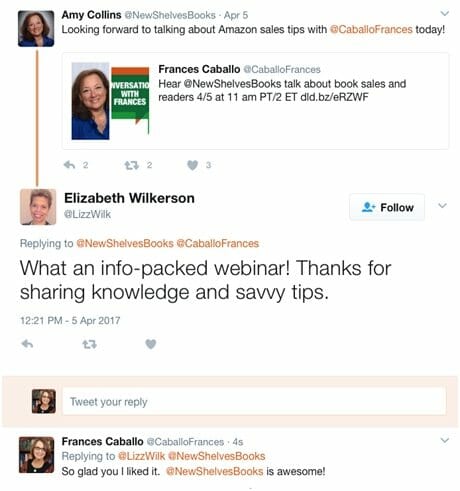
In the second example, Brant Forseng retweeted a post I wrote. I followed up with a thank you. Brant said no worries but misspelled my first name in his tweet He then apologized for the error. BookWorks chimed in with its own comment.
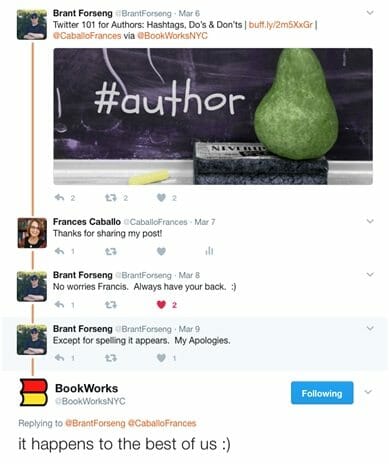
This next example is fun. Chris Brogan had tweeted a quote about achieving dreams. I replied that I’d written six books despite my mother’s prediction that I would never write a book. Reading this, Chris replied. Here’s the conversation:

The next example is similar to the Chris Brogan example. In this case, author Elizabeth S. Craig retweeted a post I wrote. I thanked her for sharing it and then added a question, asking her how she was doing. Elizabeth replied and wished me a good week.
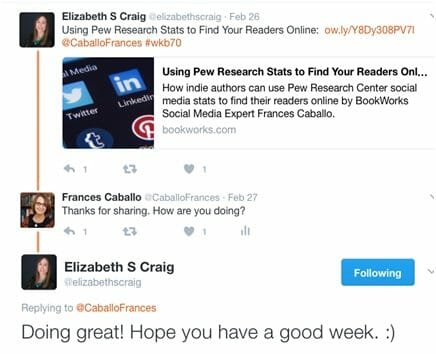
The next example exemplifies the majority of my communications on Twitter. Joanna Penn retweeted a post of mine and I thanked her and then told her how much I loved her podcast. Short and sweet!
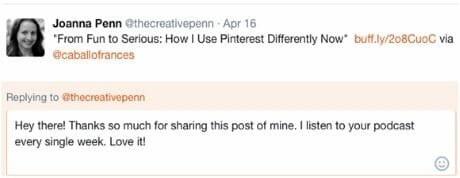
The next example is a longer conversation between romance author and podcaster Lorna Faith and myself.
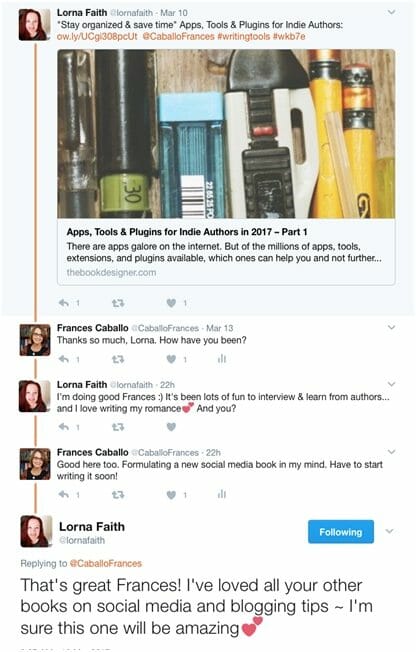
In the next example, an author retweeted my post about MailChimp and shared with me her early results for implementing a new email marketing program.
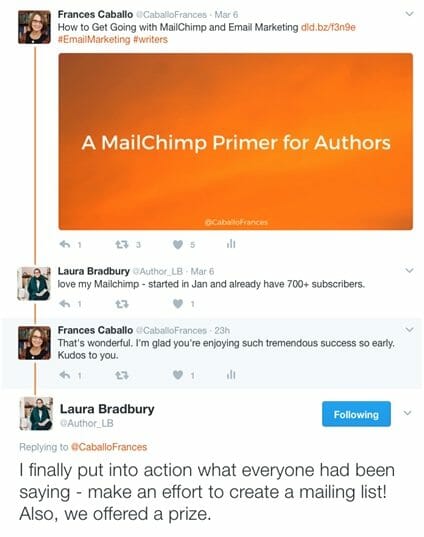
In this example, an attendee of one of my webinars tweeted the replay video and we engaged in a short conversation.
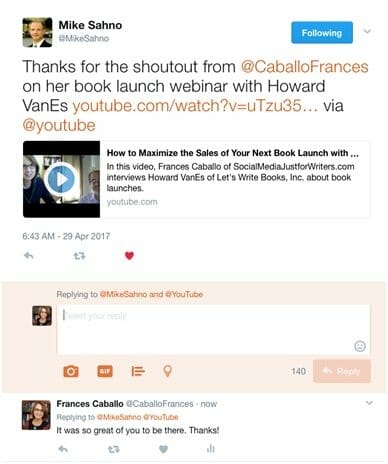
In the example below, the retweet of one of my posts lead to a discussion about the application TinyPng.com and how it can assist the load times of images on websites.
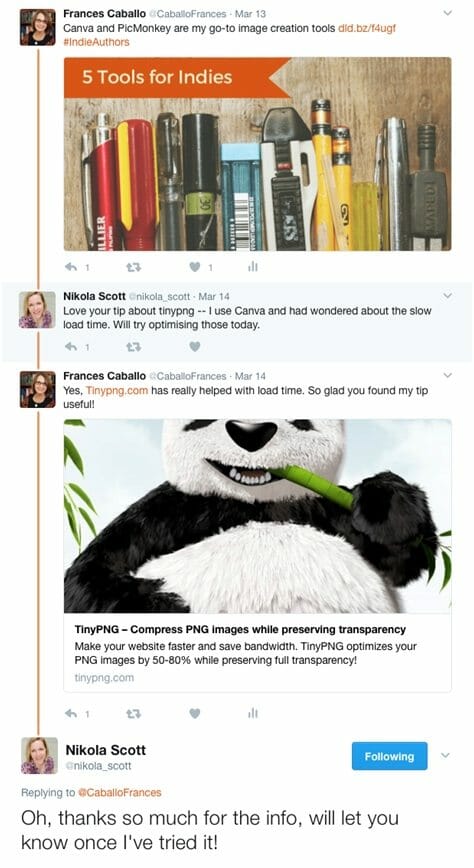
Here’s an example of a light, fast conversation. Paula Krapf is great at posting about all things related to books and what followed was a brief but fun conversation.
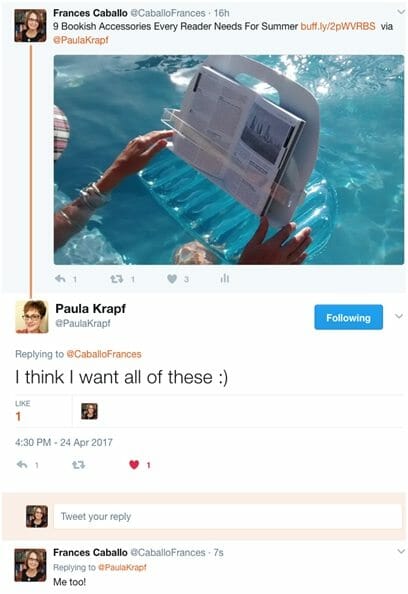
So as you can see, you can have all sorts of conversations on Twitter about memes, webinars, blog posts, and even MailChimp. So start asking questions and thanking people for their shares because you never know who will join in or where the conversation will go. Just have fun with it.
Photo: BigStock


